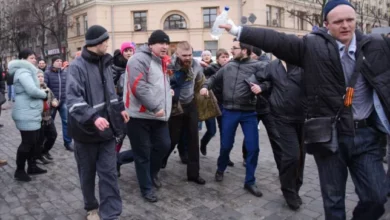Sotheby’s art fraud lawsuit involving “Salvator Mundi” is lost by a Russian billionaire

In a trial where Russian billionaire oligarch Dmitry Rybolovlev accused Sotheby’s of swindling him out of tens of millions of dollars in art sales, a federal jury on Tuesday found in Sotheby’s favor.
Rybolovlev accused Sotheby’s of working with Swiss art dealer Yves Bouvier to deceive him into paying exorbitant prices for four pieces, one of which was “Salvator Mundi,” a supposed Leonardo da Vinci portrait of Christ that would go on to become the most expensive piece of art ever sold at auction.
The privately held Sotheby’s has long argued that it was unaware of any potential lying on the part of Bouvier and that it bore no responsibility for his interactions with Rybolovlev.
Bouvier has insisted he did nothing wrong and was not a defendant. Forbes magazine estimates that Rybolovlev, 57, is worth $6.4 billion after making his fortune in potash fertilizer. In addition, he owns the majority of the AS Monaco soccer team, though there have been rumors this year that he is considering selling.
His long-running disagreement with Bouvier, which has given rise to lawsuits in several jurisdictions, is centered on the oligarch’s allegation that the Swiss dealer defrauded him out of $1 billion on 38 pieces of art. Among them was the “Salvator Mundi,” which Bouvier acquired for $80 million and promptly sold for $127.5 million to his then-client.
The fertilizer magnate claims Bouvier had defrauded him, even though he later sold the painting at auction for a record-breaking $450.3 million in 2017.
The case is one of the most well-known cases of art fraud in recent memory, providing insight into a frequently opaque sector of the market where affluent purchasers occasionally are unaware of the source of their art. Following the dismissal or discontinuation of their cases in Switzerland, Singapore, Monaco, and Hong Kong, the two came to an out-of-court settlement last year.
However, Rybolovlev persisted in his legal battle with Sotheby’s, alleging that the auction house was aware of Bouvier’s payment for a variety of artworks and had assisted in inflating Bouvier’s prices. Rybolovlev’s attorney, Daniel Kornstein, stated that the case against Sotheby’s “achieved our goal of shining a light on the lack of transparency that plagues the art market” despite the decision. It was challenging to prove a complicated case of aiding and abetting fraud because of this secrecy.
In the meantime, Sotheby’s said in a statement the decision demonstrated a “glaring lack of evidence” that it had deceived Rybolovlev and reiterated its “commitment to upholding the highest standards of integrity, ethics and professionalism”.
Jurors in Manhattan federal court needed less than a day to reach a verdict, in a trial that lasted about three weeks.
US District Judge Jesse Furman had last March let Rybolovlev pursue fraud-based claims over Leonardo, and works by Gustav Klimt, Rene Magritte, and Amedeo Modigliani. Rybolovlev originally sued over 15 pieces of world-class art though Furman dismissed fraud-based claims over the other 11 works, including art from Pablo Picasso, Auguste Rodin, and Henri de Toulouse-Lautrec.
Rybolovlev was allowed to sue over “Salvator Mundi” even though his ownership had proven unusually profitable.
In a statement emailed, via his representatives, Bouvier said: “The New York court proceedings were a surreal charade in which people argued over an alleged fraud that had never happened.”
Summary
- Russian billionaire oligarch Dmitry Rybolovlev accused Sotheby’s of deceiving him out of millions of dollars in art sales.
- Rybolovlev accused Sotheby’s of working with Swiss art dealer Yves Bouvier to deceive him into paying exorbitant prices for four pieces, including “Salvator Mundi,” a supposed Leonardo da Vinci portrait of Christ.
- Sotheby’s argued it was unaware of any potential lying and bore no responsibility for Bouvier’s interactions with Rybolovlev.
- Bouvier insisted he did nothing wrong and was not a defendant.
- Rybolovlev, worth $6.4 billion, owns the majority of the AS Monaco soccer team and is estimated to be worth $6.4 billion.
- The case is one of the most well-known cases of art fraud in recent memory, providing insight into the opaque sector of the art market.
- Sotheby’s stated the decision demonstrated a “glaring lack of evidence” that it had deceived Rybolovlev and reiterated its commitment to upholding the highest standards of integrity, ethics, and professionalism.








